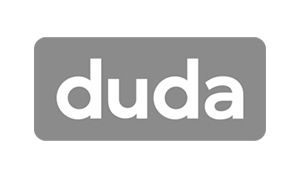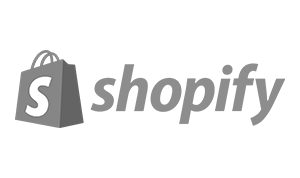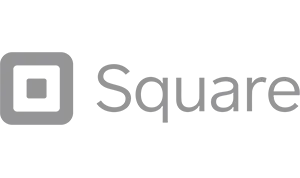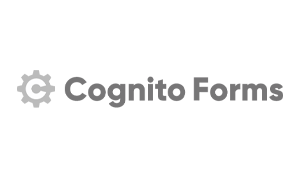Crown Street, Wollongong, 2500
What Is a Call to Action in Marketing and Why Does It Matter?
Every time you browse a website, open an email, or see an advertisement, you're subtly guided toward taking action—whether it’s signing up, making a purchase, or clicking a button.
A well-crafted CTA button plays a key role in boosting engagement, generating leads, and increasing sales by directing potential customers toward their next step. Research shows that CTAs designed as buttons have a 45% higher click rate than text links, making them far more effective at driving user interaction. Without a clear and compelling CTA, visitors may leave a website or ignore an email without taking action, resulting in lost opportunities.
In this blog, we’ll explore what a CTA is, why it’s essential, where it’s used, and how to create an effective CTA that drives real results.
What Is a Call to Action (CTA)?
A Call to Action (CTA) is a prompt that encourages the audience to take a specific action. It is commonly used in marketing, sales, and content creation to guide users toward a desired response, such as making a purchase, signing up for a newsletter, downloading a resource, or contacting a business.
A strategically positioned CTA button removes uncertainty and helps users understand what to do next. The more relevant and compelling the CTA is to the target audience, the higher the chances of engagement and conversion.
The Key Benefits of a Strong CTA
Whether you want visitors to sign up, make a purchase, or simply learn more, a strong CTA can make a big difference. Here’s why they matter:
1. Increase Engagement
Without a clear CTA, people might read your content or browse your website and then leave without taking any action. A simple prompt like “Subscribe for updates” or “Follow us for more” encourages them to stay connected with your brand. If you’re unsure where to start, looking at call-to-action examples from successful businesses can inspire you. Working with an SDR agency can help you refine your strategy, ensuring that every touchpoint engages your audience effectively. Their expertise in outreach can turn casual visitors into loyal leads.
2. Help Boost Conversions
If your goal is to get more customers, sign-ups, or downloads, a CTA is essential. A phrase like “Get 20% off – Shop Now” or “Try it free today” gives people a reason to act. The clearer and more persuasive your CTA, the more likely people are to respond.
3. Guide Visitors in the Right Direction
A good CTA helps people navigate your website easily. Instead of leaving them to figure things out on their own, a phrase like “Learn More” or “Start Your Free Trial” directs them exactly where they need to go. Reviewing call-to-action examples used in different industries can help you create one that works best for your audience.
4. Supercharge Your Marketing Efforts
CTAs are the backbone of emails, ads, and landing pages. By making your CTA clear, compelling, and action-driven, you can boost engagement and drive better results from your marketing campaigns.
Businesses that fail to use CTAs effectively may struggle to convert visitors into customers. A good call to action not only grabs attention but also aligns with the motivations of the target audience, increasing its impact.
Avoid These Common CTA Mistakes
Some common CTA mistakes include:
- Being too vague – Users should immediately understand what they are clicking on.
- Overloading with multiple CTAs – Too many options can confuse users.
- Placing CTAs in the wrong spot – A poorly placed CTA can go unnoticed.
Crafting the perfect CTA goes beyond just the words—it also involves design, placement, and understanding user behaviour. Many businesses turn to digital marketing and web design experts to create high-performing CTAs that capture attention and drive conversions. These experts can analyse user data, run A/B tests, and optimise CTAs for better performance across different platforms.
How to Write a Good Call to Action
A conversion-focused call to action is clear, concise, and action-oriented. Here are the key principles:
- Use direct and persuasive language – Instead of "Click Here," use "Get Your Free Guide Now."
- Focus on the benefit – Highlight what the user gains, e.g., "Save 20% Today."
- Create urgency – Phrases like "Limited Spots Available" encourage prompt action.
- Keep it short and impactful – A CTA should be clear and easy to understand.
Where Are CTAs Used?
CTAs are used across various digital platforms to engage users and encourage specific actions. Some of the most common placements include:
1. Emails and Email Marketing
Without a strong CTA, emails can feel incomplete or directionless. An impactful CTA not only increases click-through rates but also directs recipients to high-converting landing pages. To maximise impact, make sure your CTA creates a sense of urgency or highlights a clear benefit.
Some engaging call-to-action examples for email marketing include:
- Claim Your 10% Discount – A great incentive to encourage purchases
- Confirm Your Subscription – Helps ensure users complete the sign-up process
- Download Your Free Guide – Perfect for lead generation and sharing valuable content
Personalised CTAs achieve 202% higher conversion rates than generic ones. To maximise effectiveness, tailor your language to your audience’s specific needs, such as their profession, challenges, or goals.
2. Social Media and Digital Advertising
CTAs are just as important on social media as they are on websites and emails. Whether you’re running an organic campaign or a paid ad, a strong CTA helps drive engagement and encourages users to take the next step.
Some CTA examples for social media include:
- Follow Us for Updates – Boosts brand awareness and engagement
- Tag a Friend Who Would Love This – Increases social sharing and interaction
- Click the Link in Our Bio – Common on Instagram, directing users to relevant content or offers
Some proven CTAs in paid ads include:
- Shop Now – Encourages immediate action for e-commerce brands
- Limited Time Offer – Buy Today – Creates urgency to drive sales
- Learn More About Our Services – Directs users to an informative page or offer
As trends shift toward more AI-driven targeting, voice search, and interactive ad formats, businesses may adapt their CTAs to stay ahead in the future of digital marketing.
3. SEO and Websites
Your website is often the first place potential customers engage with your brand, making it a crucial space for CTAs. Among the most important areas are landing pages, which are designed with specific goals like lead generation, product promotion, or event registration. Research indicates that including a clear CTA on a landing page can boost conversions by up to 121%.
Some CTA examples for landing pages include:
- "Sign Up for Free"
- "Get a Quote"
- "Book an Appointment"
To maximise the SEO benefits of CTAs, businesses should:
- Place CTAs Strategically – Position CTAs where users naturally engage, such as at the end of blog posts, in the sidebar, or within compelling content sections.
- Optimise for Mobile – Ensure CTAs are easy to tap on mobile devices, as mobile-friendliness is a Google ranking factor.
- Use Internal Linking with CTAs – CTAs like "Read More Articles Like This" or "Check Out Our Latest Guides" help with site structure and internal linking, boosting SEO.
- Improve Page Load Speed – Slow-loading CTAs can frustrate users and increase bounce rates. A fast-loading CTA button ensures a seamless experience.
The Role of Secondary CTAs
While a strong CTA is essential for driving conversions, not every visitor is ready to take the primary action right away. This is where a secondary CTA comes into play. It ensures that visitors don’t leave without taking some kind of action. It gives them more flexibility while still moving them through the sales funnel. Some key benefits include:
- Increases Engagement – Not everyone is ready to buy, but they might be willing to subscribe, download a guide, or watch a video.
- Reduces Bounce Rates – If users don’t want to take the primary action, a secondary call to action offers them an alternative to stay engaged.
- Nurtures Leads – Some visitors need more time to make a decision. A secondary call to action—like signing up for a newsletter—keeps them connected to your brand.
By offering both options, you allow users to engage in a way that suits them best, increasing the chances of conversion down the line.
The Psychology Behind an Effective CTA
A great call to action revolves around cognitive biases, emotional triggers, and persuasive techniques that drive user behavior. Here’s a breakdown of the key psychological principles that make a CTA effective:
1. Clarity & Simplicity
People are more likely to take action when the CTA is clear and direct. When faced with too many choices or complex wording, users may hesitate or leave altogether. The best CTAs focus on one CTA at a time, reducing decision fatigue and making it easy for the audience to respond.
2. Urgency & Scarcity
Creating a sense of urgency compels users to act immediately. Phrases that suggest limited availability or time-sensitive offers trigger FOMO, encouraging users to take action before they miss out. This tactic is widely used in marketing materials to boost conversions and sales.
3. Emotional Appeal
Emotions play a crucial role in decision-making. A well-crafted CTA taps into positive emotions such as excitement, relief, or success, making people more likely to engage. Understanding your target market allows you to craft strategic CTAs that resonate with their desires and motivations.
4. Social Proof & Trust
People tend to follow what others are doing. CTAs that incorporate trust signals—like customer testimonials, user counts, or expert endorsements—can increase credibility and persuade hesitant users to take action.
5. Action-Oriented Language
High-converting CTAs use strong, imperative verbs combined with a clear benefit. Instead of being vague, they tell users exactly what to do and why it benefits them. Action-driven language removes uncertainty, making it easier for people to commit.
By keeping it clear, creating urgency, tapping into emotions, building trust, and using strong action words, you can guide users toward making a decision.
Final Thoughts
Businesses that use clear, compelling CTAs see higher engagement, better conversions, and improved customer interactions. The key is to make CTAs specific, action-driven, and visually appealing to maximise their impact. By implementing CTAs, businesses can turn website visitors and social media followers into loyal customers.

Love My Online Marketing has 10+ Years of working alongside businesses and helping them grow. Discuss your options for online success from website Design and Development through to Google Marketing.
Do you want more traffic and business leads?
Love My Online Marketing is determined to make a business grow. Our only question is, will it be yours?






























